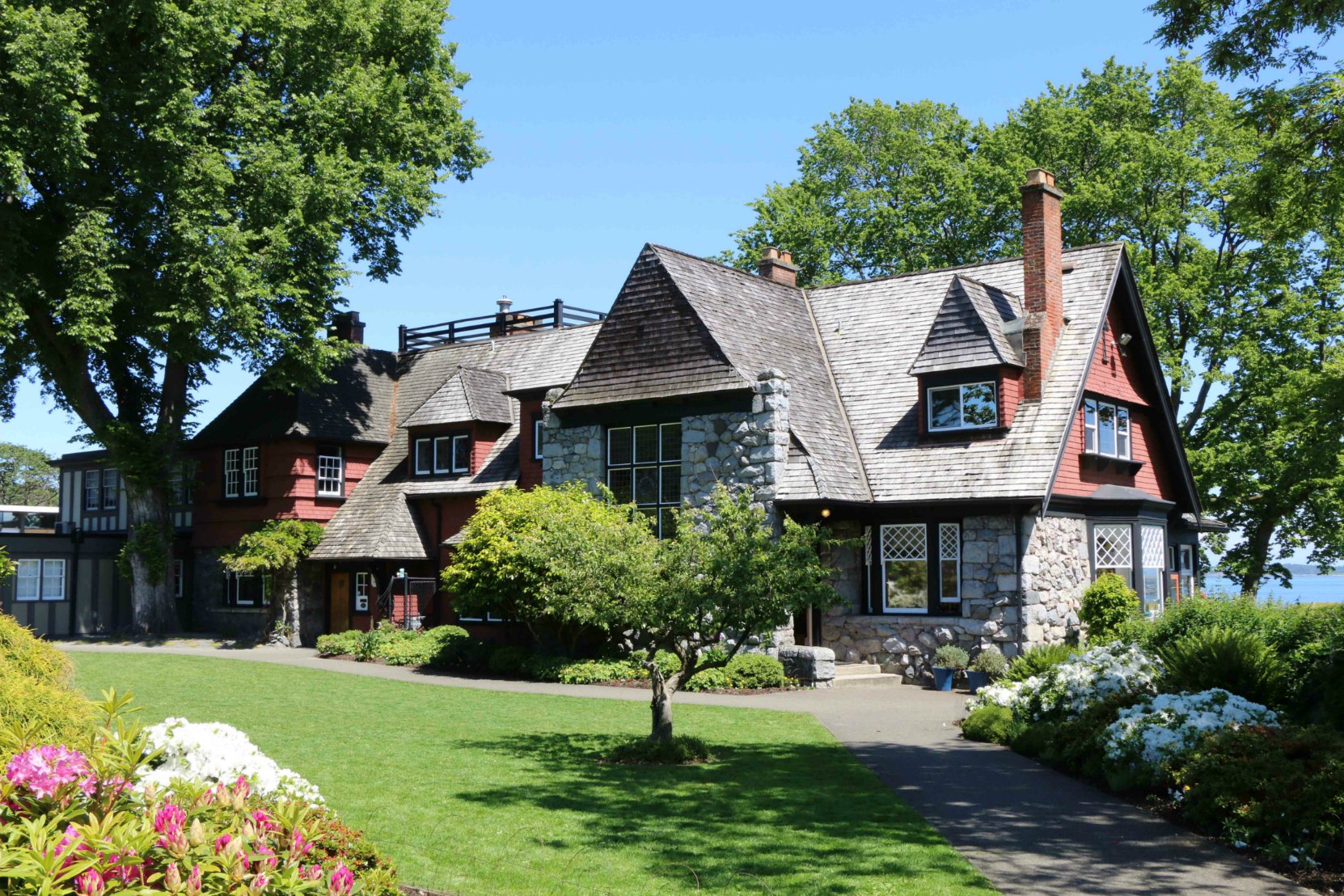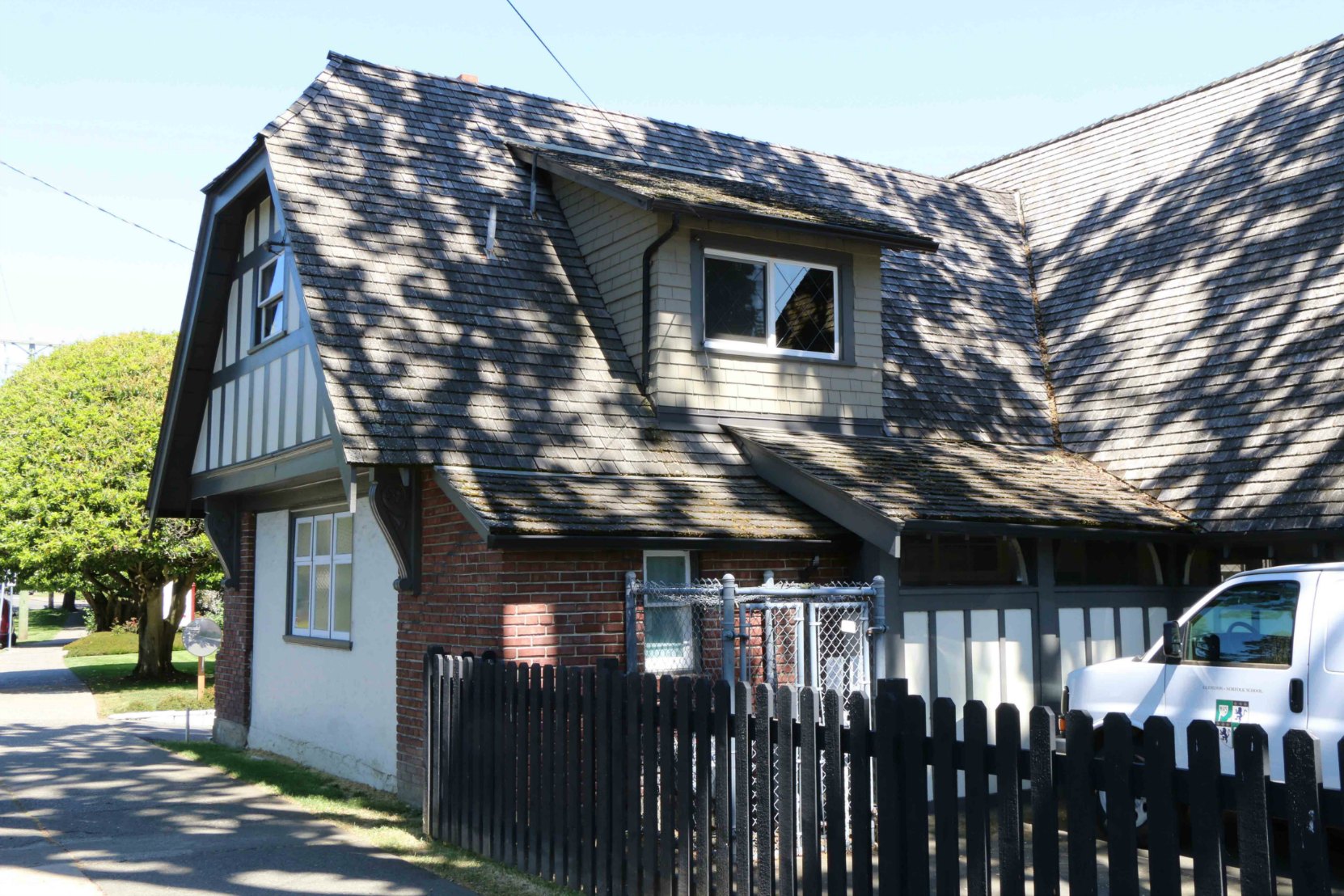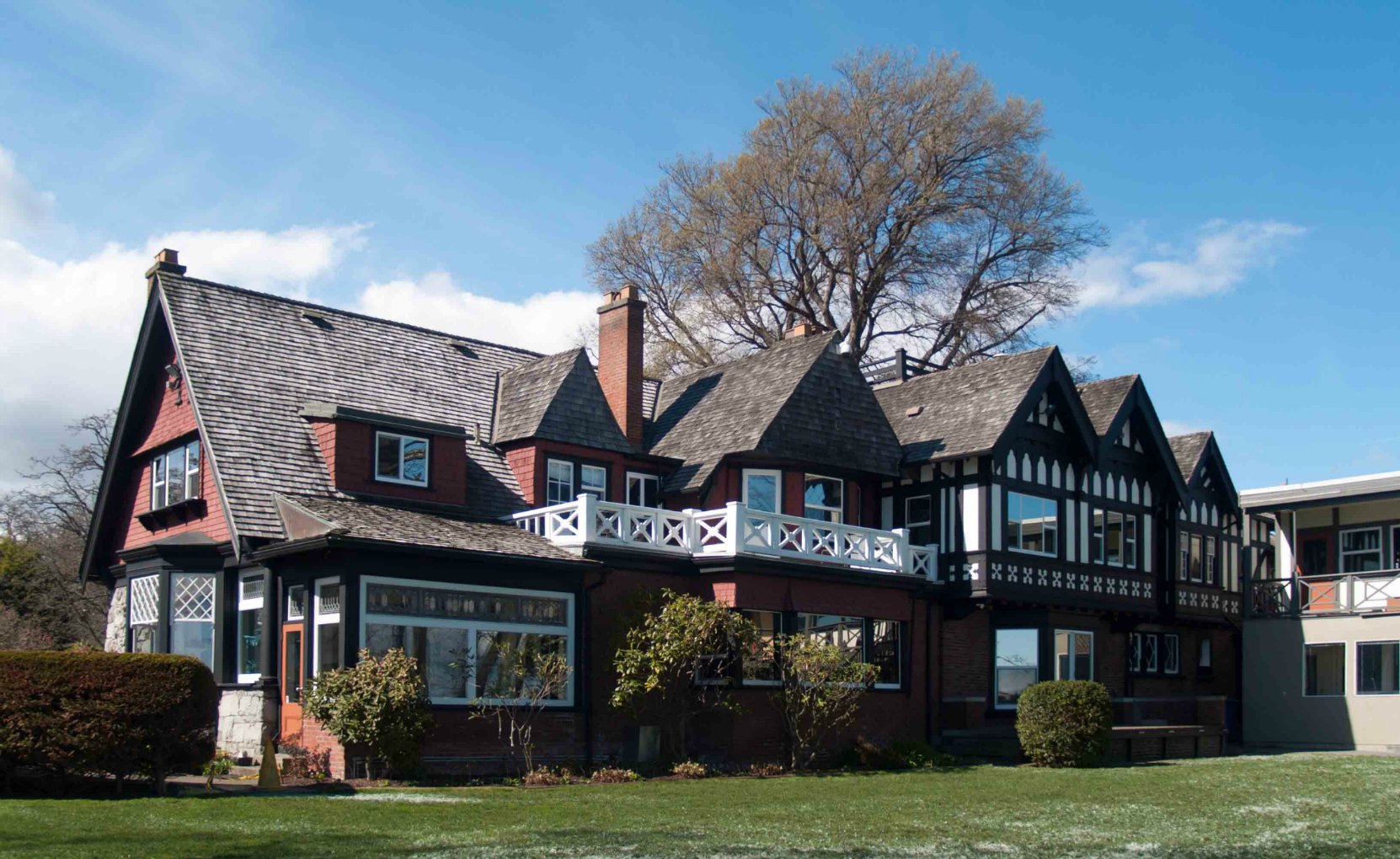Victoria City Tour
Beach Drive
1701 Beach Drive – Glenlyon-Norfolk School
1701 Beach Drive was originally built in 1898 by architect Francis Rattenbury as his personal residence. It is now Glenlyon Norfolk School.

1701 Beach Drive, Iechinihil (now Glenlyon Norfolk School). Built in 1898 by architect Francis Rattenbury as his personal residence.
Here is a map showing the location of Glenlyon-Norfolk School, 1701 Beach Drive:
Here is a Google Street View image of 1701 Beach Drive:
Additional Information About 1701 Beach Drive
- Assessed Value (July 2019): $4,642,000; Land $2,817,000; Buildings $1,825,000
- Assessed Value (July 2018): $4,126,000; Land $2,337,000; Buildings $1,789,000
A Brief History of 1701 Beach Drive
Here are links to some historic photographs of 1701 Beach Drive.
- City of Victoria Archives photo M0112 – March 1899, under construction
- City of Victoria Archives photo M0110 – March 1899, under construction
- City of Victoria Archives photo M00108 – March 1899, under construction
- City of Victoria Archives photo M07623 – 1899, under construction
- City of Victoria Archives photo M00109 – March 1899
- City of Victoria Archives photo M0111 – April 1899, under construction
- City of Victoria Archives photo M0114 – March 1900
- City of Victoria Archives photo M7635 – 1912
- City of Victoria Archives photo M0118 – 1912
- City of Victoria Archives photo M0116 – 1912
- City of Victoria Archives photo M0117 – 1912(?) addition
- City of Victoria Archives photo M00115 – March 1899
- BC Archives photo F-07002 – circa 1910, the south end of the original house, before the 1913 addition
- BC Archives photo D-03002 – circa 1912, the south end of the original house, before the 1913 addition
- BC Archives photo D-03003 – circa 1914, east facing, waterfront, side after the 1913 addition.
- City of Victoria Archives photo M7631 – 1912
- City of Victoria Archives photo M0112 – Garage, car and driver, circa 1914
- City of Victoria Archives photo M07630 – interior, 1912
- City of Victoria Archives photo M07633 – interior, 1912
- City of Victoria Archives photo M07636 – interior, 1912
- City of Victoria Archives photo M07788 – tea party, circa 1912
- City of Victoria Archives photo M07634 – 1912/li>
- City of Victoria Archives photo M10135 – August 1920
1701 Beach Drive was originally built in 1898 by architect Francis Rattenbury as his personal residence. At that time it was common for people to name their homes. Francis Rattenbury named his home Iechinihl.
The original section of the house was the south end, which was built in 1898. In 1913 the north end of the main house was added.

The Coach House at 1701 Beach Drive, (now Glenlyon Norfolk School), Built in 1914 by architect Francis Rattenbury as an addition to his personal residence.
Francis Rattenbury attracted a strong taint of scandal to this house. In 1902, Francis Rattenbury and Samuel Maclure had collaborated on the design of Government House on Rockland Avenue. Francis Rattenbury had supervised the construction of Government House on behalf of the client, the B.C. provincial government.
In February 1904, the B.C. provincial Legislature convened a select committee to investigate allegations of improper conduct by Francis Rattenbury during the construction of Government House, the complaints ranging from poor supervision of construction work to outright theft and corruption.
The committee’s attention was also drawn to the fact that Rattenbury’s new home at 1701 Beach Drive was being furnished with thick marble identical to that being used in Government House. And although ten marble fireplace grates, of unusual design, had been ordered for Government House from an English manufacturer, only nine of those grates had actually been installed in Government House. The missing grate, it seemed, had somehow been installed in Francis Rattenbury’s new Oak Bay home here at 1701 Beach Drive.
The select committee cleared Francis Rattenbury, but grudgingly, hinting that it might have reached a different decision if it had been given more time to investigate.
In 1924, the 56 year old Francis Rattenbury attracted more scandal when he abandoned his wife, Florence (Florrie), and scandalized Victoria society by publicly flaunting his 29 year old mistress, Alma Pakenham. There were rumours that Alma introduced Rattenbury to what today might be called the “recreational use” of cocaine.
Rattenbury added fuel to the scandal by pressuring his wife for a divorce. His tactics were unorthodox. When Florence Rattenbury refused to move out of this house at 1701 Beach Drive, Francis Rattenbury had the heat and electricity shut off. When that didn’t work, Rattenbury began bringing his mistress Alma to this house, entertaining his mistress in front of his wife. On one such evening, Alma taunted Florrie Rattenbury by pounding out a loud rendition of Chopin’s Funeral March on the piano as Florrie lay ill in an upstairs bedroom.
When Florence Rattenbury finally agreed to a divorce in 1925, she demanded, as part of the settlement, that Francis Rattenbury build her a new house near 1701 Beach Drive. Since the Rattenburys were not on speaking terms, Francis Rattenbury hired architect Samuel Maclure to design and build a house for his soon to be ex-wife. The house is still standing at 1513 Prospect Place, a block west of 1701 Beach Drive.
After the divorce, Francis Rattenbury married Alma Pakenham but the couple were virtually ostracized from Victoria society over Francis Rattenbury’s treatment of his ex-wife Florence. Prospective clients shunned Francis Rattenbury as well, causing Rattenbury’s architectural practice to become dormant.
With his social standing and his professional career in tatters, Francis and Alma Rattenbury moved to England, settling in the town of Bournemouth.
Things did not improve for Francis Rattenbury in Bournemouth. Alma Pakenham began an affair with the couple’s 18 year chauffeur/handyman, George Stoner.
In the early morning of 23 March 1935, Francis Rattenbury was discovered unconscious, seated in an arm chair in his living room. He had suffered severe head injuries, inflicted with a carpenter’s mallet. He died of his injuries four days later.
Both Alma Rattenbury and George Stoner were charged with Francis Rattenbury’s murder. Alma Rattenbury was acquitted but committed suicide a few days after the trial. George Stoner was convicted of murder and sentenced to death, although the sentence was later commuted to life imprisonment. George Stoner was released from prison in 1942 on condition that he enlist in the British Army.
In the 1950’s, Sir Terrance Rattigan wrote a play about the Rattenbury murder case, entitled Cause Celebre. In 1987, Britain’s ITV produced a television adaptation of Cause Celebre, starring Helen Mirren, which first aired on 23 August 1987.
Here’s a trailer for the 1987 ITV production of Terrance Rattigan’s Cause Celebre, starring Helen Mirren.
For more information about Francis Rattenbury, we recommend Rattenbury, by Terry Reksten. This book was originally published in the 1970’s but it remains the best biography of Francis Rattenbury that we are aware of.

Book cover, Rattenbury by Terry Reksten.
Rattenbury – By Terry Reksten
This is best biography of Francis Rattenbury that we have read.
Would you like to leave a comment or question about anything on this page?
Error: Contact form not found.




Get Social